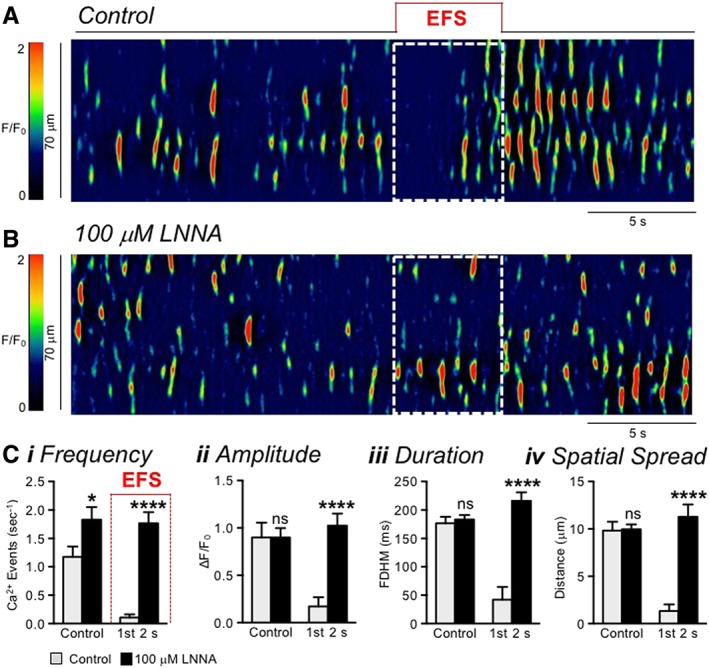Figure 4.

Ca2+ transients in ICC‐DMP are inhibited by nitrergic neural input. (A, B) Spatio‐temporal maps depicting Ca2+ transients in an ICC‐DMP in the mouse small intestine. Note the transient and spatially restricted nature of these events that are expected to couple to activation of CaCC channels in the plasma membrane. EFS (10 Hz, 0.5 ms pulse duration; 5 s; white dotted box) in panel (A) inhibited Ca2+ transients during the initial phase of stimulation (~2 s), and then excitatory input caused restoration of Ca2+ release. A rebound period of excitation occurred after cessation of EFS. (B) Addition of L‐NNA (100 μM) blocked the inhibition of Ca2+ transients during EFS. (C) Tabulation of effects of EFS on Ca2+ transient frequency (i), amplitude (ii), duration (iii), and spatial spread (iv) in ICC‐DMP during control conditions (pre‐EFS) and during the initial 2 s of EFS before and after L‐NNA (n = 5 animals; 15 cells). ns = P > 0.05; *P < 0.05; ****P < 0.0001. Copied with permission from Baker et al. (2018).
